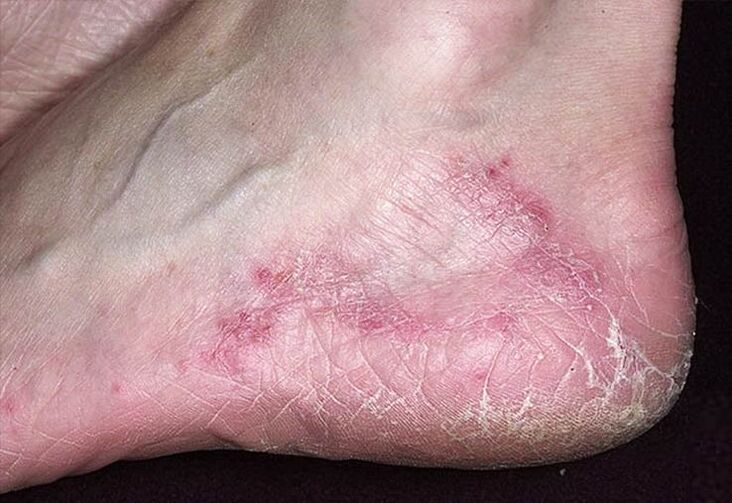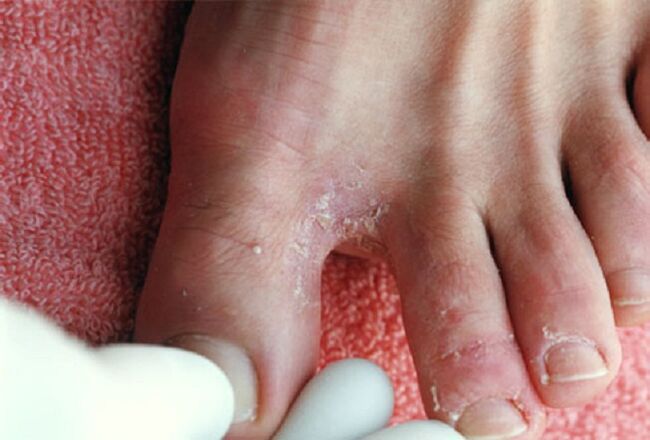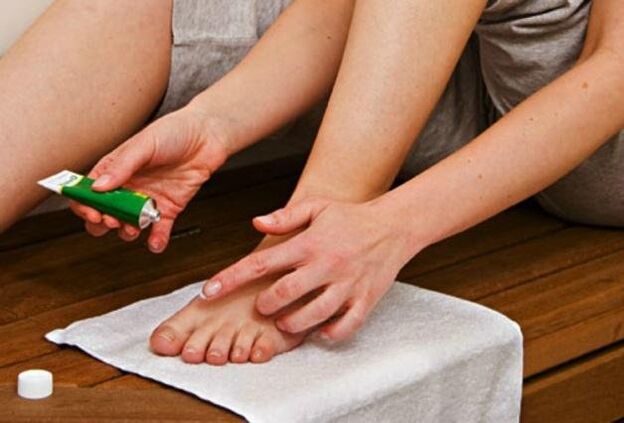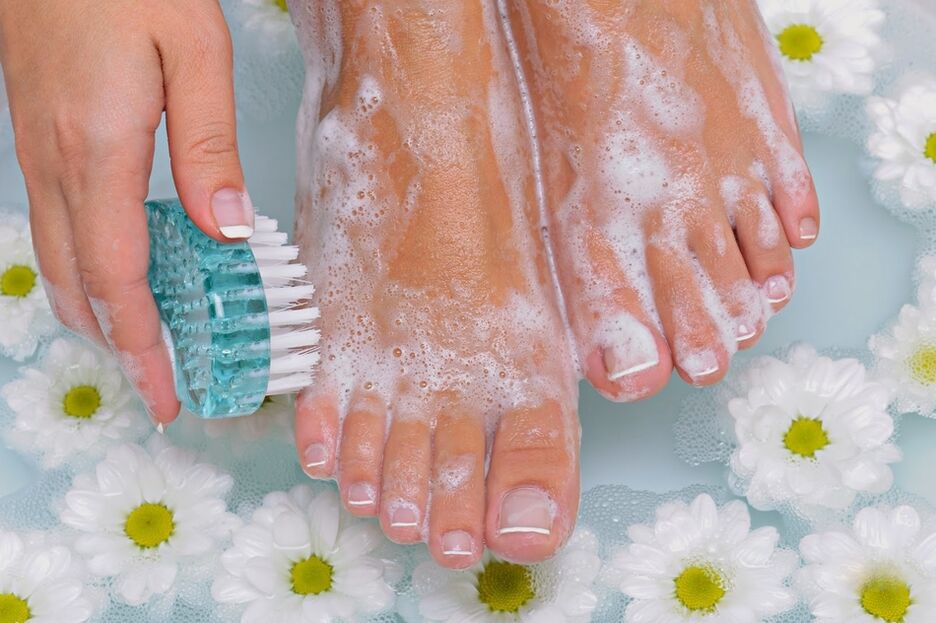The prevalence of mycoid diseases has made them diseases that are easy to recognize and treat in their early stages. But the signs of foot fungus themselves, indicating the beginning of infection, are not familiar to everyone. After all, there are only about fifty types of mushrooms. But there is also a type of skin disease - epidermal mycoses. Therefore, to prevent the disease from developing to a state dangerous to the body's health, it is necessary to study its characteristics.

General signs
Fungal skin infections are at the forefront of diseases affecting the epidermis. Its signs are quite easy to recognize. The main difficulty in the diagnostic process is accurately determining the type of fungal infection. This is necessary because each of them is resistant to a certain group of antifungal drugs. Therefore, to proceed with treatment, it is imperative to see a doctor. Accurate identification of the mycoid group is impossible without special biological research.
The following signs may be a reason to contact a specialist:
- Cracks in the cuticles between the toes. This is the area considered to have the highest risk of fungal infection. Additional evidence of infection may include excessively dry skin, peeling of the feet, and pain.
- Noticeable thickening and roughness of the skin layer. Similar symptoms are also observed when dry corns or callus form. But in some cases, the cause of this change is fungus.
- Skin destruction, blistering. Such injuries are often first diagnosed in one leg and then appear in the other.
- Red epidermis, itching or burning sensation. This set of symptoms is considered one of the main signals confirming a fungal infection. The difficulty in making a diagnosis in this case lies in the fact that each type of mycoid causes such a wide range of symptoms.
- Change the color of the nail plate.
- The appearance of an unpleasant odor in the infected area.
It is important to promptly detect the first signs of fungus because the disease is difficult to treat and can easily lead to infection.
Mycoid infections quite easily enter the body, infecting organs and internal systems. This explains the frequent recurrence of the disease in the complete absence of external provoking factors.

Medical classification
Mycosis fungoides is classified according to its characteristics into four main forms.
For each form of foot fungus, symptoms vary depending on the cause:
- Scaly.
- Dyshidrotic.
- Continuous.
- "Classic" onychomycosis.
The scaly or scaly form of fungal infection is considered one of the early stages of the infection. The skin lesions in this case were first observed on one foot. Over time, a second infection occurs. The main symptom of scaly form is redness of the skin, which then develops into keratinization in inflamed tissue areas. If left untreated, the squamous form will develop into a dyshidrotic form.
The dyshidrotic form of mycoid infection has one pronounced feature - the appearance of small bubbles in the affected area. Once opened, the blisters become inflamed, forming a steady erosion in the upper layers of the skin. Patients often experience severe itching, which in quite severe cases leads to pain. The skin begins to peel and regular erosions form. This form of the disease may develop into the first squamous form without any systemic involvement. Because of this, some experts believe that the mentioned forms of mycosis are two forms of the same infection.
The alternating form of infectious fungal infection is the most common. Symptoms of the disease include the appearance of cracks on the skin of the feet, visible to the naked eye, and the formation of white areas of peeling skin at the edges. As for the interstitial area, the characteristic signs of the interstitial form are the formation of oozing spots and erosion of the epidermis. The patient continuously itches in the infected area. Treatment of this form of infection is very complex and lengthy, because the disease often progresses in a chronic form.
Nail fungus is a contagious infection, the symptoms of which are given special attention. Depending on the pathological characteristics, the type of damage to the nail plate and the type of disease change. There are three main types of onychomycosis:
- Hypertrophy - the nail plate gradually collapses, the color turns yellowish and characteristic spots appear. Pain in the affected area appears after the nail is deformed.
- Normalization - destruction or change in shape of the nail plate does not occur, yellow and white spots or lines appear on it.
- Atrophy is the most dangerous form of the nail plate, in which it is severely damaged, deformed, and often detaches from the nail bed.
Each form of nail fungus has its own general treatment regimen. But in order to completely eliminate the infection without consequences for the body and exclude recurrence, treatment should be carried out according to recommendations and under the supervision of a doctor.

Treatments
In most cases, complete cure of a timely detected disease is possible in up to a month. This is a very important point in treatment, because itching, tissue damage and other manifestations disappear, patients sometimes stop treatment, believing that the disease is cured. But remnants of the infection can easily cause a relapse.
Treatment procedures should be stopped only after the doctor's permission and after passing the necessary tests. This is especially true for progressive forms of the disease. This fungus is firmly "fixed" in the body and sometimes it takes at least six months to get rid of it. But the external manifestations of fungus on the feet in the form of various lesions on the skin or nails disappear much earlier, creating the illusion of health. By stopping treatment in this case, the patient will almost certainly experience a relapse.
Treatment of mycoid fungal infections of the feet is comprehensive. To get better, people use topical antifungal medications and medications to eliminate infectious agents that have entered the body. To get rid of itching, pain, brittle nails and accelerate tissue regeneration, certain medications can be prescribed. They should not be combined independently of the main treatment group so as not to cause allergic reactions or poisoning of the body due to simultaneous use of incompatible drugs.
Treating foot fungus in the early stages is quite simple. Usually, two weeks of treatment are enough to eliminate the symptoms of mycoid infection.

Treatment time
Combined skin and nail infections require rehabilitation therapy for one to three months. These terms are considered the standards for the most effective pharmaceutical products from a medical point of view.
Pregnancy requires a mandatory visit to the doctor to choose a method of eliminating mycoid infection. Effective medications and treatments require the use of similar medications prescribed only under a physician's supervision and with strict adherence to dosage. Many antibacterial tablets effectively kill fungi that can cause obvious harm to the fetus. Therefore, whenever possible, during pregnancy, patients should be treated with traditional medicine recipes. Many of them allow you to cope with the disease, but on condition that the disease has not yet reached a complicated stage. Only classical medicine can help cope with the advanced form.
Modern drugs allow you to fully restore health to your feet within two weeks, provided that signs of infection are detected in time.

Precautions
Preventing disease is always easier and safer for your health than treating it, even when using the most gentle method. In the case of fungal infections, prevention is one of the mandatory rules of life, since it is very easy to get infected. Therefore, to reduce the risk of getting sick, some simple rules should be followed:
- Try to eat right, eat healthy foods whenever possible;
- Do not use other people's utensils and personal hygiene items;
- Use basic protective equipment in public places such as replacement shoes and hygienic antibacterial agents;
- Wash your feet and change socks regularly;
- leading a healthy lifestyle;
- Bathe regularly to improve foot health;
- Disinfect shoes periodically.
Preventing fungal infections is important not only to prevent it but also if it occurs. In this situation, compliance with hygiene and sanitation standards helps speed up healing and prevent fungal infections in others.



























